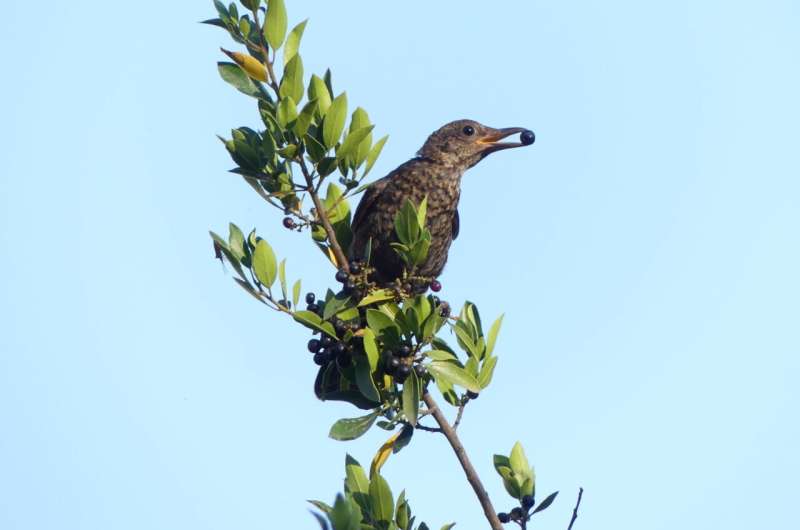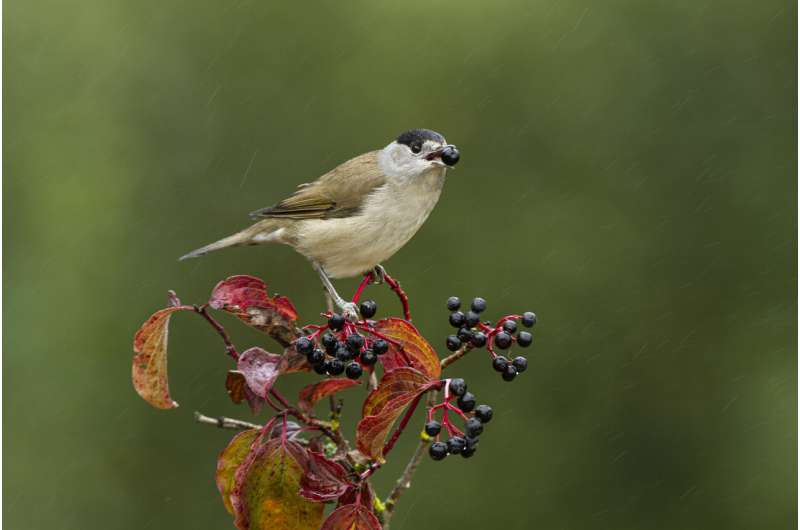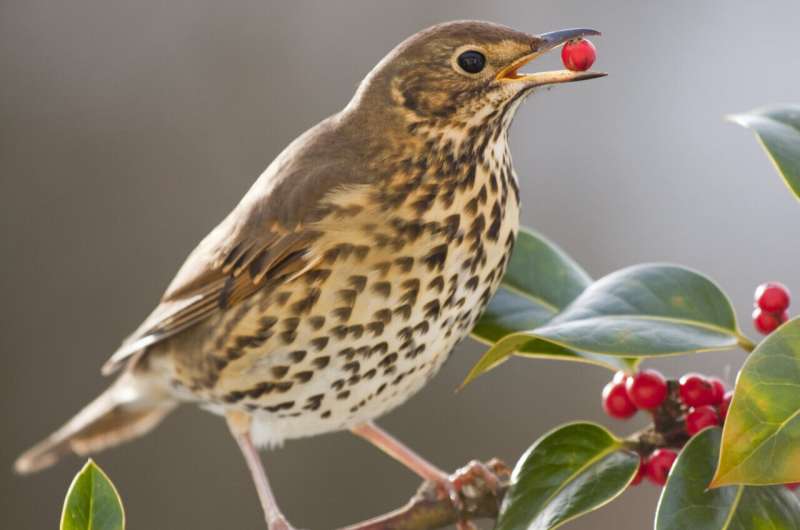Bird migration takes plants in wrong direction to cope with climate change

Migratory birds carry most seeds in the wrong direction to help plants cope with climate change, new research shows.
The study, published in Nature, reveals that the vast majority of plants from European woodlands are dispersed by birds migrating to warmer latitudes in the south, while far fewer are dispersed by birds migrating north.
As a consequence of global warming, the optimal climatic conditions of species are moving towards cooler latitudes, forcing the redistribution of life on Earth.
Mobility allows many animals to reach new areas with a suitable climate.
However, movement of plant species depends on the dispersal of their seeds at long distances.
The new study, by 18 researchers from 13 European institutions, says the trend for southwards dispersal by migratory birds is counterproductive if plants are to adapt to climate change.
"Contemporary climate change is so fast that many plants require dispersal distances far beyond those that normally take place locally," said lead author Juan Pedro González-Varo, of the University of Cádiz.
"This is where migratory birds can play a major role, as they are capable of dispersing seeds over tens of kilometers.
"With this research, we wanted to know the potential of plant species to be dispersed by migratory birds towards future favorable areas."

The research focussed on bird species that consume fruits and disperse the seeds.
Researchers incorporated information on the fruiting period of plants and migratory patterns of birds, in order to identify the potential for long-distance seed dispersal towards cooler or warmer latitudes.
They examined 13 woodlands across Europe, including a total of 949 interactions between 46 bird and 81 plant species.
Only 35% of the plants from these woodland communities are dispersed by birds that migrate northwards in spring.
In contrast, 86% of plants are dispersed by birds migrating to warmer areas in autumn (the figures do not add up to 100% because some plants' seeds are carried both north in spring and south in autumn).
Dr. Benno Simmons, of the University of Exeter, said: "Under climate change, species redistribute themselves to track suitable climate conditions.
"As plants cannot move themselves, they require species like birds to disperse their seeds to new areas.
"We wanted to know how well migratory birds might be able to do this.
"We found that northward dispersal to cooler areas is done by only a small number of migratory bird species, some of which are under hunting pressure.

"Our study emphasizes the importance of these species for helping European plant communities experiencing climate change."
González-Varo added: "For a plant species to be dispersed by birds migrating north, it must bear fruit between February and April.
"Plants with fruits in this period have a very long fruiting period, as occurs in junipers, or a very late fruiting period, as occurs in ivy."
Although all migratory birds in Europe migrate in the same direction (north in spring and south in autumn), the study shows that the birds with the greatest potential to disperse European plants to cooler latitudes are Palearctic species—birds that winter in central and southern Europe or North Africa.
These species are robins, blackcaps, blackbirds and various species of thrushes, which are in general very common and abundant on the European continent.
"Although these are common species, the potential for seed dispersal to the north lies with only a handful of species, some of them heavily hunted in the Mediterranean Basin, both legally and illegally," said González-Varo.
"We believe that our study gives added value to these species, since they would be responsible helping European plant communities respond to climate change."
The findings have major implications for the future composition of European woodlands, as many species could fail to move fast enough to keep up with changing conditions.
The paper is entitled: "Limited potential for bird migration to disperse plants to cooler latitudes."
More information: Limited potential for bird migration to disperse plants to cooler latitudes, Nature (2021). DOI: 10.1038/s41586-021-03665-2 , www.nature.com/articles/s41586-021-03665-2
Journal information: Nature
Provided by University of Exeter




















